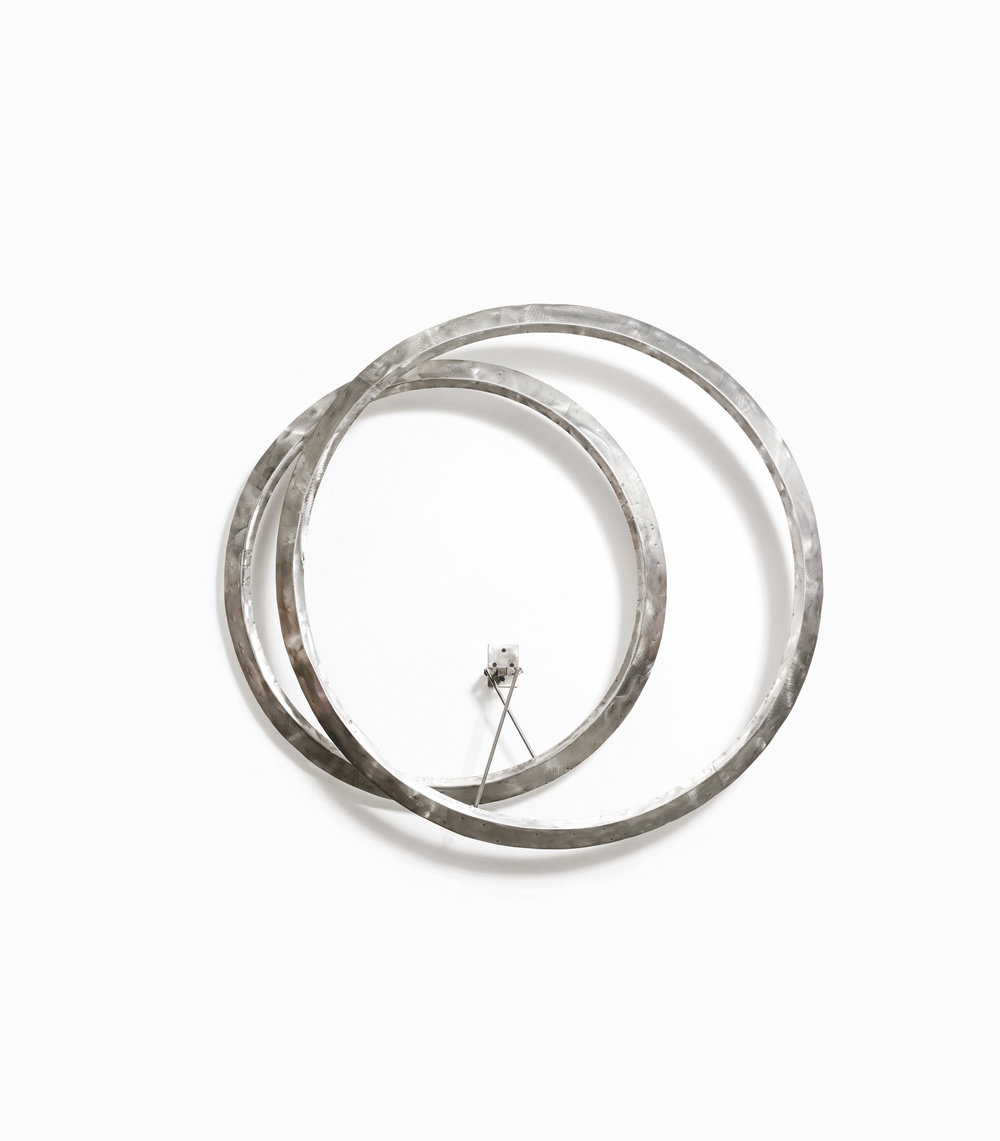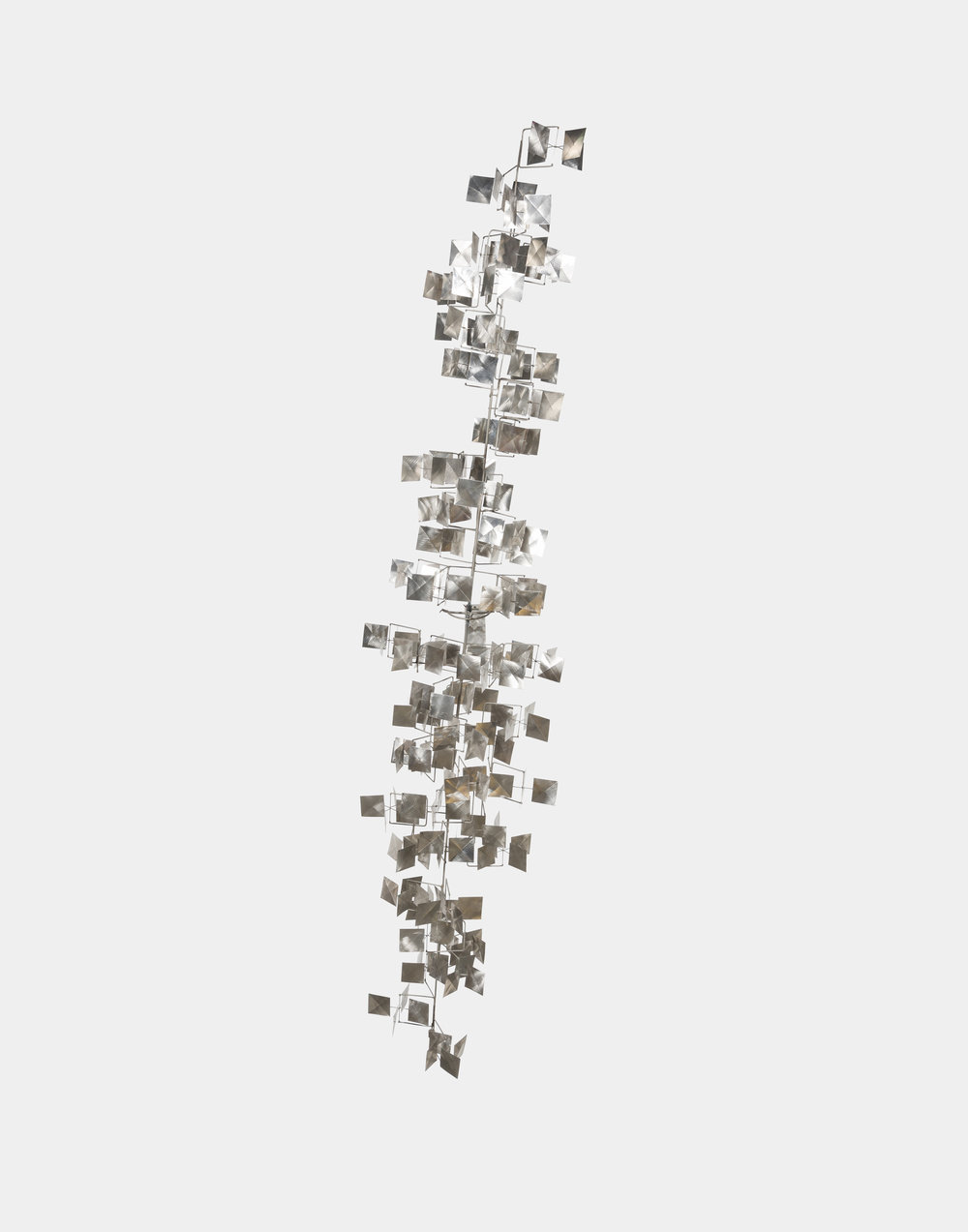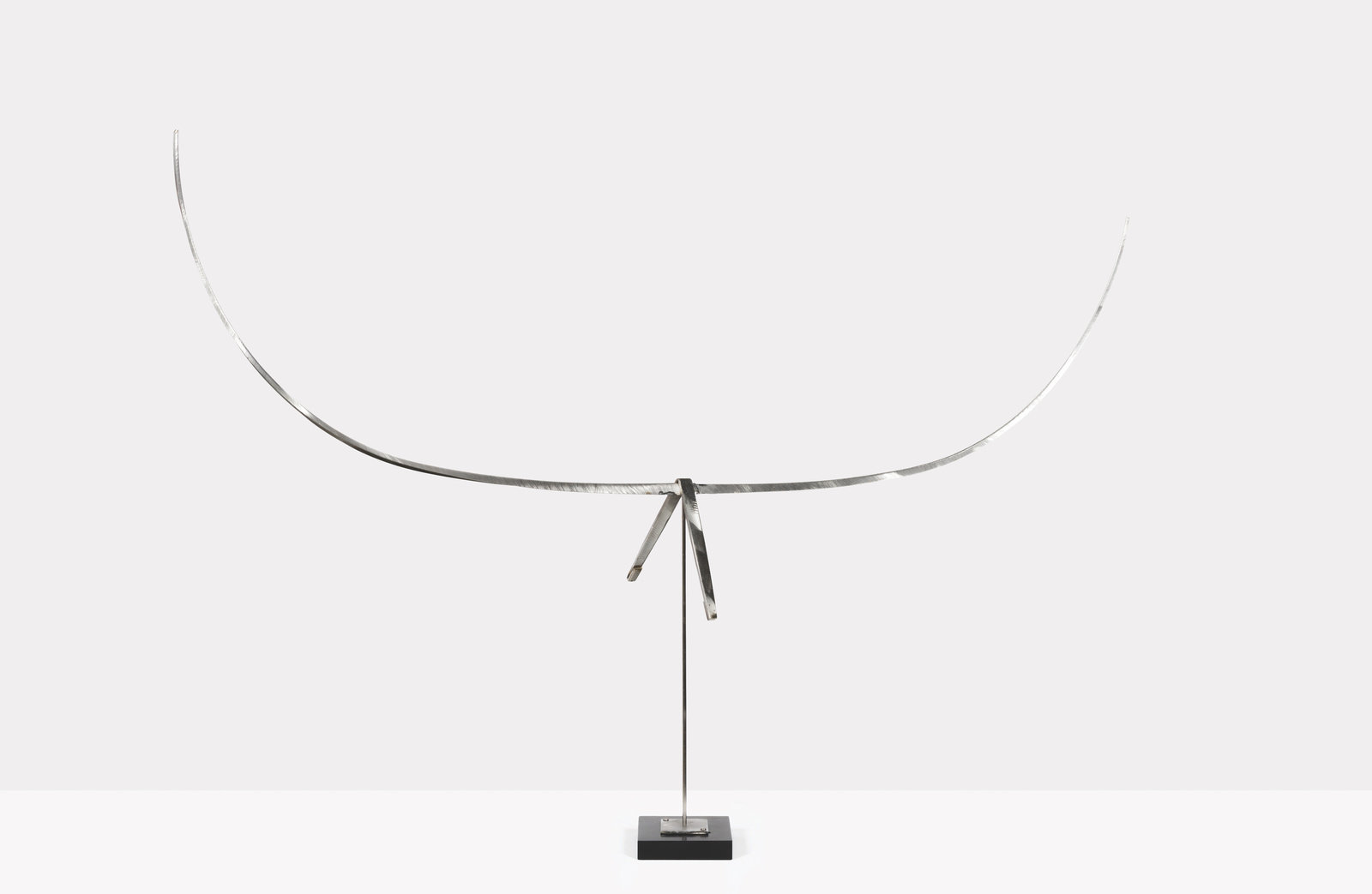Marlborough is pleased to announce George Rickey: Selected Works from the Estate 1954-2000, an important exhibition of works by the artist at Marlborough Galler. The exhibition features monumental and small-scale indoor and outdoor sculptures from the artist’s estate, many of which have never before been exhibited. The exhibition consists of 34 works covering the breadth of Rickey’s career.
George Rickey is among the most inventive and influential artists of the twentieth century. His sculpture evolved from experiments with a broad range of materials that began during his years of service in World War II. By the late 1950s and early 1960s he reduced sculptural forms to simple, geometric shapes such as rectangles, trapezoids, cubes, and lines. Rickey, along with Alexander Calder, introduced the notion of kinetic sculpture—sculpture capable of motion—to America in the mid-twentieth century. Rickey was among the first to create works that were intended for outdoor exhibition, and he became well-known for light reflective stainless steel sculptures of geometric forms that respond to the action of air currents.
Beginning with Flag Waving Machine II (1954) and Ship (1955), this exhibition brings together over two dozen unique works that came from the artist’s personal archive of sculptures. Ship is a rare transitional work in which the artist used an abstracted image of a sailing vessel, a vehicle powered by wind, as a subject for his wind activated sculpture. Rickey’s son Philip described these works as being made partly through a sense of playful humor combined with the artist’s love of sailing, which included a deep knowledge of the complex rigging components for sails, masts and other hardware necessary for sailing, which carry into the work through his delicate yet practical construction of the sculptures’ inventive support structure. As with all of his works, the artist’s hand is present in the bended twists of metal rod, file marks and the ever present solder joints—each decision thoughtfully worked out by hand. The sculpture, as if drawn across a two-dimensional surface, captures space and evinces the essence of movement.
Rickey’s transition to non-objective forms in 1961, with his first knife-edge rotational blade pieces, marked a shift toward finding a means to capture the complex movements of air and light through his sculptures. The seminal blade pieces were followed by the invention of many other forms, shapes and rotational connections which allowed for ever more complex works. Six years after the creation of Ship, Rickey produced Tidal III (1961), a fully formed, extremely complex hanging blade sculpture that through its rhythmic, overlapping movement opened the door to a technically expanding future of monumental kinetic sculpture.
Rickey pursued his sculptural interests with consistent focus and intensity to the end of his long career. Later works such as Annular Eclipse Wall Variation V (1999) and Double Wobble (2000) illustrate his continued pursuit of new forms though which he could reveal the complexity of movement and light.
George Rickey was born on June 6, 1907, in South Bend, Indiana. In 1913 the family moved to Scotland, where his father, an engineer for the Singer Sewing Machine Company, had been transferred. While studying modern history at Oxford, Rickey also took courses in painting and drawing at the Ruskin School of Drawing and Fine Art. After graduation, he went to Paris to study art at the Académie André Lhote and at the Académie Moderne.
The artist received honorary doctorate degrees from nine institutions. He was elected to the National Institute of Arts and Letters in 1974 and received the Gold Medal for Sculpture from the American Academy of Arts and Letters in 1995.
George Rickey’s works can be found in major museums throughout the world, including: The J. Paul Getty Museum, Los Angeles, CA; Solomon R. Guggenheim Museum, New York, NY; Hara Museum of Contemporary Art, Tokyo, Japan; The High Museum of American Art, Atlanta, GA; Los Angeles County Museum of Art (LACMA), Los Angeles, CA; The Metropolitan Museum of Art, New York, NY; The Museum of Fine Arts, Dallas, TX; The Museum of Modern Art (MoMA), New York, NY; The National Gallery, Edinburgh, Scotland; The National Gallery ofArt, Washington DC; New Orleans Museum of Art, New Orleans, LA; Oakland Museum of California, Oakland, California; Berlinische Galerie, Berlin, Germany; Tate Gallery, London, England, and the Whitney Museum of American Art, New York, NY.
An illustrated catalog will be available on the occasion of the exhibition.
Works


